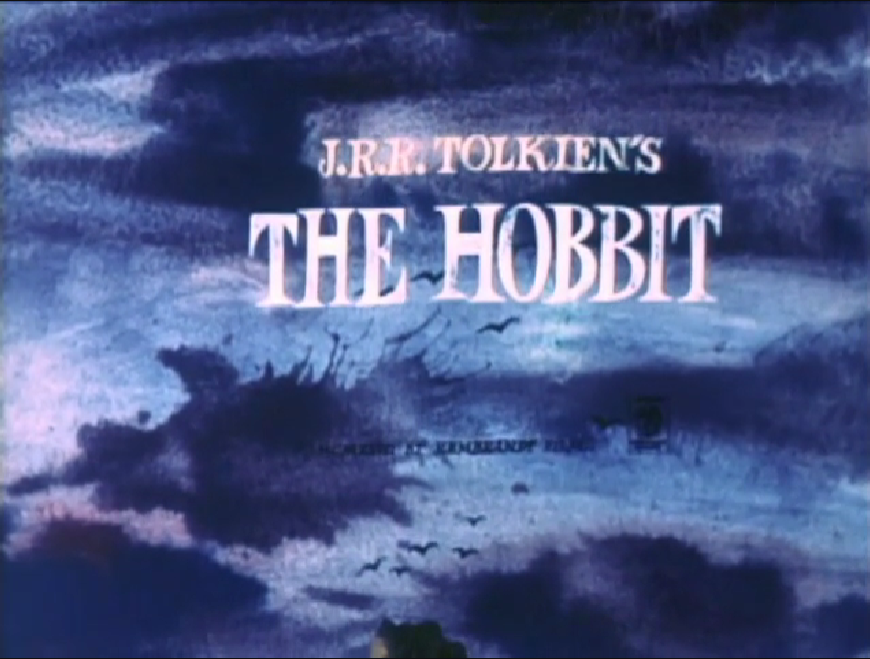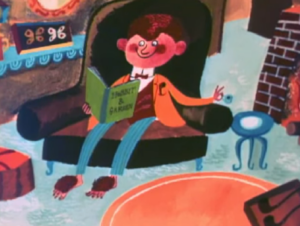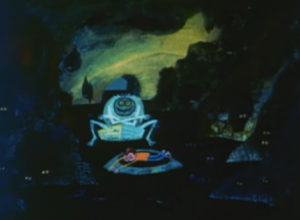Tolkien Before Jackson Part 1: Intro and The Hobbit (1966)

The release of Peter Jackson’s Lord of the Rings trilogy changed how viewers and critics see fantasy films, leading many to unearth prior adaptations of Tolkien to see how they compare.
In the interest of public service and information, I tracked down as many of these pre-Jackson projects as I could find. There is considerable debate about their quality. Some have become cult films, with just as many detractors as supporters. Others are obscure projects still waiting to be appraised. Well-made or rudimentary, all of these films provide an interesting look at (live-action and animated) fantasy filmmaking before the 1990s. Sometimes they provide an interesting hint of what trends would follow.
Note: several of these movies were produced and released in foreign countries. I have done what I can to give the English rendition of the title for consistency across the article. Where possible, I have listed the original title as well.
The Hobbit (1966, directed by Gene Deitch)
This twelve-minute loose adaptation of Tolkien’s novel has a background connection to a much more famous Tolkien adaptation: Gene Deitch worked in the 1950s at Terrytoons, the same animation company that gave Ralph Bakshi his start as an animator. Bakshi later became famous for directing the 1978 movie The Lord of the Rings (which will be discussed in a later post). So, we have two men who were colleagues, each giving their take on Tolkien’s material.
However, the results were very different. Primarily because Deitch’s movie was never meant to be seen by the general public.
This animation movie is what film historians call an ashcan copy—a movie made for minimal or no release so that the producer can maintain their rights to the property. Deitch explained on his blog that in the early 1960s, he was working with producer William L. Snyder to produce a feature-length animated Hobbit movie. At the time, the film rights weren’t especially valued—Lord of the Rings wouldn’t become a bestseller for several years. By 1966, Tolkien’s work had reached bestseller status and Snyder realized he couldn’t afford to renew his (now very lucrative) Hobbit film option if it expired. So, he commissioned Deitch to a very low-budget Hobbit cartoon in a month, before his option expired. The film was made in then-Czechoslovakia with illustrations by Adolf Born. After it was finished, Snyder showed the film once in a small New York theater where everyone paid a dime to see it.
Fortunately, after being lost for decades, the film resurfaced in the 2010s and Deitch made it available for anyone to see on his blog.
So, how does this stripped-down Hobbit look today?
The result is more fun than you would expect. The animation is bare bones—drawings which never move, but a camera moving across them to create the illusion of motion. Born has a whimsical style that fans of Jiří Trnka and other Czech animators from this period will probably find it nostalgic. Watching it as an American who grew up watching many 1940s-1960s American cartoons, I found it reminded me of the “Fractured Fairy Tales” segments in the cartoon show Rocky and Bullwinkle, but with rich colors that those cartoons rarely had. So, the movie has a bare-bones feel, but it almost feels charming in its simplicity.



The script, told by one narrator who also does all the voices, is unintentionally funny. It condenses everything so much that Deitch called it “The Ghost of the Hobbit.” Major scenes—a dragon destroying a town, Bilbo’s guests eating all his food, two monsters transformed into stone, Bilbo finding a ring in a cave, Bilbo taking the Arkenstone from the dragon’s lair—happen, but at double time. Character names are changed (Gollum is Goloom, Smaug is “monster lizard Slag the Terrible”). To omit the Battle of the Five Armies and other complicated plot points, Bilbo is the ordained dragon slayer (traveling with three people instead of thirteen). One of the three people is called Princess Mika and becomes his bride at the end.
So, The Hobbit has a plot that feels more like a parody of the book than a serious treatment. The visual approach looks more like an episode of the American TV children’s show Reading Rainbow than an animated film. Still, it’s consistently entertaining.
The extremely condensed package also highlights something: perhaps the toughest part of adapting The Hobbit is the fact it doesn’t fit expectations. It may be a children’s fairytale, but it’s a children’s fairytale that breaks many of the usual tropes. It has no love story (something Deitch fixes by marrying Bilbo to a princess). It has a plot about defeating a dragon but doesn’t feature the hero (Bilbo) killing the dragon, and the dwarves’ troubles don’t end with Smaug’s death. Tolkien may not have been writing a postmodern deconstruction of fairytales, but he does present an unusually complex fairytale. Which makes The Hobbit a particularly tough story to adapt, whether the adaptors have 12 minutes or 90 to 120 minutes.
Come back next week as we look at a 1971 Swedish TV adaptation of Lord of the Rings.

3 Responses
[…] in this series). Since Gene Deitch’s 12-minute version of The Hobbit was rediscovered in 2012 (see previous post in this series), various people have discussed its […]
[…] at it now, what perhaps stands out the most is the animation looks halfway between cultures. In the first post in the series, on Gene Deitch’s The Hobbit, I mentioned it combines an American director and an Eastern European artist working together. We […]
[…] all the flaws, Bakshi does get one thing right. Of the projects discussed in this series, Bakshi’s film comes the closest to a cinematic take on Tolkien’s material. Others are […]